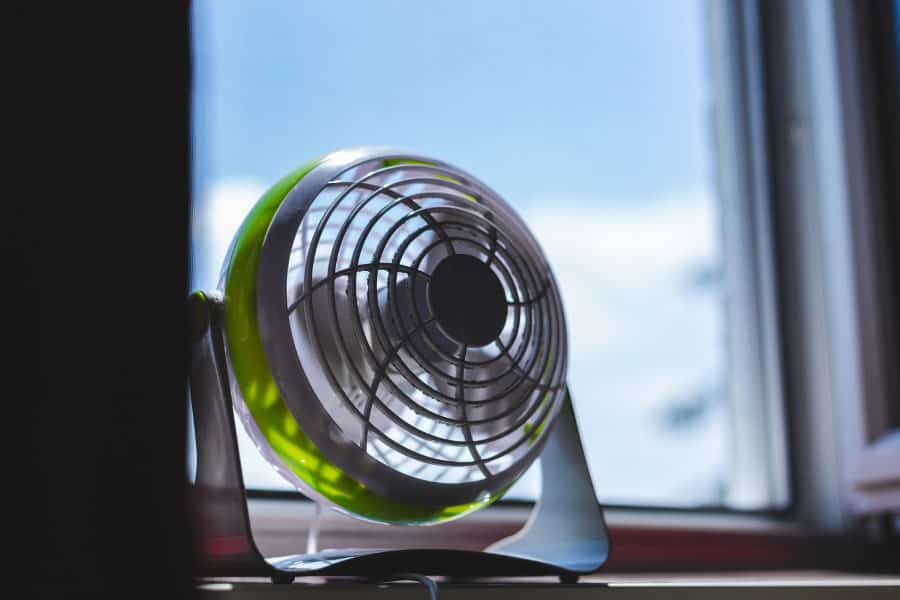If you’re looking for a fan to help keep your office cool, but don’t want the noise of a traditional fan, then a quiet office fan is the way to go. There are a few things to consider when choosing the best quiet office fan for your needs, including size, price, and features.
The first thing to consider is the size of the fan.
You’ll want to make sure that it’s big enough to circulate air in your office, but not so big that it’s obtrusive or takes up too much space. The next thing to consider is price. While you don’t want to spend a lot on a quiet office fan, you also don’t want to skimp and end up with a inferior product.
Finally, take a look at the features offered by different fans and choose one that has everything you need.
If you’re looking for a quiet office fan, there are a few things to keep in mind. First, consider the size of the fan. A larger fan will be more powerful and thus louder.
Second, look for a fan with adjustable speeds. That way, you can find the right balance of power and noise for your needs. Third, make sure the fan is stable and won’t vibrate too much.
A well-built fan will be less likely to wobble and make noise. Finally, Choose a style that fits your office decor. There are many sleek and modern designs that will blend in nicely with your space.

Credit: www.kxan.com
What is the Quietest Desk Fan on the Market?
The quietest desk fan on the market is the Dyson AM06. It uses Air Multiplier™ technology to draw in air and amplify it 16 times, resulting in a powerful airflow while remaining quiet. The Dyson AM06 also has a sleep timer, so you can set it to turn off after either 30 minutes, 1 hour, 2 hours, or 4 hours.
What is the Most Quietest Fan?
When it comes to finding the quietest fan, there are a few things you need to take into account. The size of the fan, the type of motor, and the blade design all play a role in how much noise a fan will make.
To start, let’s look at the different types of motors used in fans.
The most common type of motor is an induction motor. These motors are relatively quiet, but they can generate a humming noise that can be annoying. direct current (DC) brushless motors are even quieter than induction motors and are often used in high-end fans.
Next, we need to consider blade design. Fans with more blades tend to be quieter than those with fewer blades because they create less turbulence. Conversely, fans with larger blades move more air and therefore tend to be louder than those with smaller blades.
So, what is the quietest fan? It depends on your specific needs and preferences. If you want a powerful fan that moves a lot of air, you’ll have to accept that it will be noisy.
However, if you’re looking for a low-powered fan for use in a bedroom or office, one with DC brushless motor and lots of blades should do the trick nicely!
How Many Db is a Quiet Fan?
If you’re looking for an answer to the question “How many dB is a quiet fan?,” you’ll want to know that it depends on a few factors. The size of the fan, the type of blades, the speed at which it’s spinning, and whether or not it’s encased in a sound-dampening material will all affect how much noise it emits.
Generally speaking, though, most quiet fans will fall somewhere between 20 and 30 decibels.
To give you some perspective, 30 decibels is about as loud as a whisper, while 80 decibels is equivalent to the noise level of a busy street. So if you’re looking for a truly silent fan, you might want to look for one that falls closer to 20 decibels.
Of course, even the quietest fans can be disruptive if they’re placed in close proximity to your head while you’re trying to sleep.
If noise levels are a concern for you, it might be worth considering investing in an ultrasonic humidifier instead – these devices emit virtually no noise at all!
What is the Quietest Fan Design?
There are many different types of fan designs, each with their own unique advantages and disadvantages. Some fan designs are quieter than others, making them ideal for use in environments where noise levels need to be kept to a minimum. The quietest fan design is the axial flow fan.
This type of fan uses a propeller to draw air in and push it out, creating a low-noise airflow. Axial flow fans are often used in computer systems and other electronic equipment where noise levels need to be kept low.
TOP 5: Best Desk Fan for Office and Bedroom 2022 | Ultra-Quiet with USB
Best Desk Fan
A desk fan is a small, portable fan that can be placed on a desk or table. These fans are usually powered by electricity and come in a variety of sizes and designs. Desk fans can be used to cool down a room, circulate air, or simply provide refreshing airflow.
When choosing a desk fan, it is important to consider the size of the fan, the power source, and the features that are most important to you.
Conclusion
The best office fan is the one that won’t make a lot of noise. You want to be able to concentrate on your work, not on the noise of the fan. A good office fan will have a low noise level and will be able to circulate air without being too loud.
There are many different types of fans available, so you should be able to find one that meets your needs.
